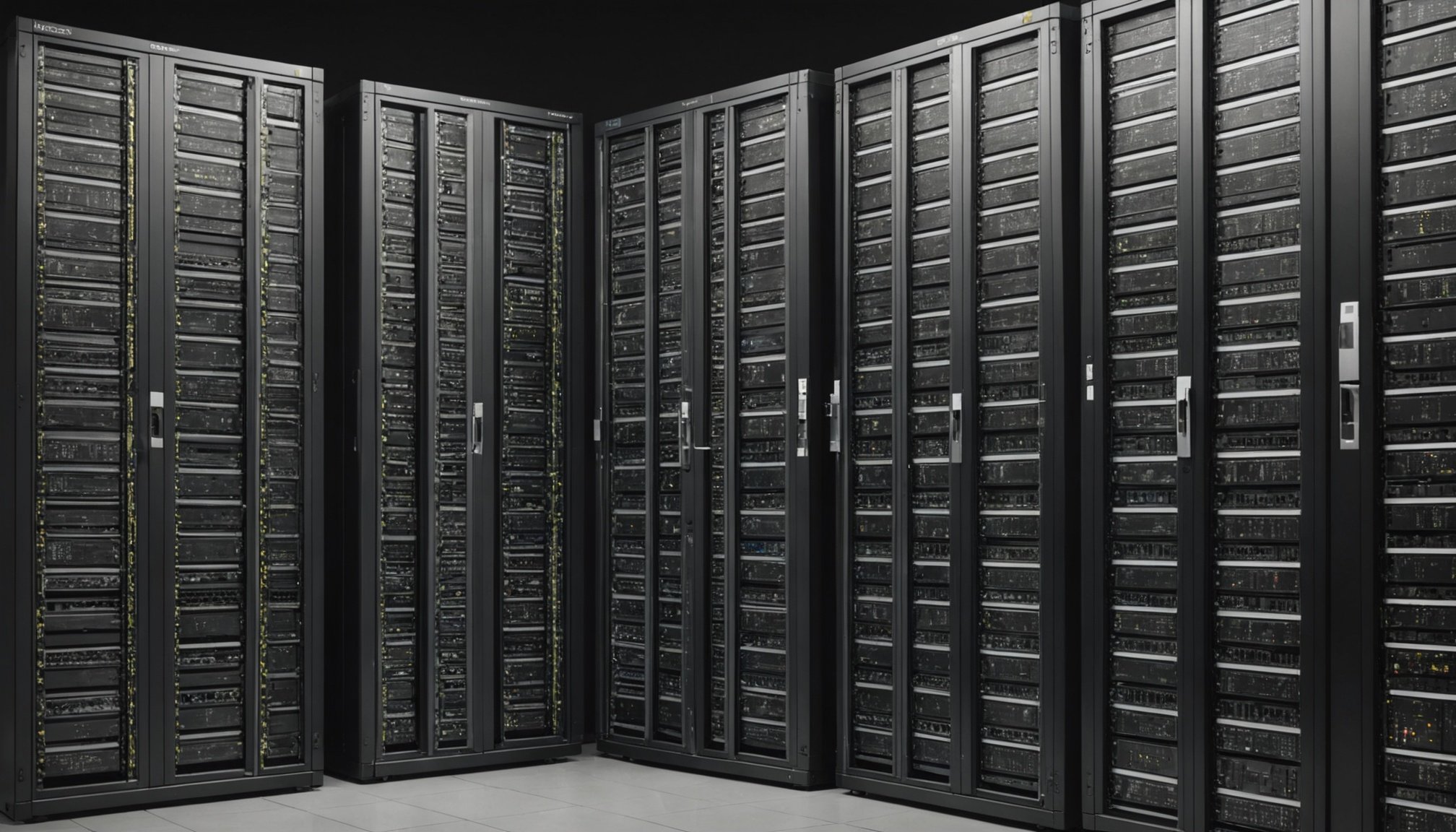Unlocking Apache Cassandra: The Definitive Handbook for Scalable and High-Availability Data Storage Solutions
What is Apache Cassandra?
Apache Cassandra is an open-source, NoSQL database designed to handle large amounts of data across many commodity servers, providing high availability and scalability. Developed by the Apache Software Foundation, Cassandra was initially released in July 2008 and has since become a cornerstone for many large-scale, high-performance applications.
Key Features of Apache Cassandra
-
Distributed Architecture: Cassandra is built to run on multiple nodes across multiple data centers, ensuring high availability and scalability by distributing data across the cluster. This architecture allows for linear scalability, where adding new nodes to the cluster can easily handle increased load without downtime or application interruption[2][4].
In parallel : Revolutionize your designs with dynamic website mockups
-
High Availability and Fault Tolerance: Data is replicated across multiple nodes in the cluster, ensuring that if a node fails, data can still be accessed from other nodes, providing continuous availability. This robust fault tolerance is crucial for real-time applications that cannot afford downtime[2][4].
-
Wide-Column Store Data Model: Cassandra uses a wide-column store data model, which is particularly suited for time-series data that grows chronologically over existing rows. This model allows for efficient storage and retrieval of data, making it valuable for applications that track changing trends over time[2][4].
This might interest you : Ultimate Guide to Enhancing PostgreSQL Reliability: Mastering Setup with Read Replicas
-
Flexible Data Modeling: Unlike traditional relational databases, Cassandra is schema-free, allowing you to store different types of data in the same table without defining a schema beforehand. This flexibility is especially useful for applications where data structures are expected to change or exhibit a lot of variation[4].
Data Model and Schema Flexibility
Cassandra’s data model is one of its most compelling features. Here’s a detailed look:
Wide-Column Store
-
Rows and Columns: In Cassandra, data is stored in rows and columns, similar to a relational database, but with much greater flexibility. Rows can have columns with different names and data types, making it easy to store various types of data efficiently[2][4].
-
Secondary Indexes: Cassandra supports secondary indexes on top of its wide-column structure, allowing data to be retrieved faster based on frequently queried columns. However, the creation and management process of these indexes adds complexity to administration[2].
Schema-Free Design
- No Predefined Schema: Unlike relational databases, Cassandra does not require a predefined schema. This means you can add or remove columns from rows as needed, without the need for schema modifications. This flexibility is particularly useful in big data environments where data structures are often dynamic[4].
Consistency and Performance
Consistency and performance are critical aspects of any database system. Here’s how Cassandra handles these:
Consistency Models
-
Granular Control: Cassandra offers different consistency levels (ANY, ONE, QUORUM, ALL) for both reading and writing. This allows developers to strike a balance between system operations that are consistent and fast performance according to their application needs. For example, using the QUORUM consistency level ensures that a majority of the replicas must acknowledge a write operation before it is considered successful[2].
-
Eventual Consistency: Cassandra also supports eventual consistency, which allows for faster read/write operations at the cost of some possible stale replicas. This model is particularly useful in applications where high availability and performance are more critical than absolute consistency[2].
Performance Optimization
-
Low Latency: Cassandra is known for its low latency, making it perfect for real-time applications that require immediate data processing. The ability to control replication strategies and data partitioning further optimizes query performance[1][2].
-
Scalability: As new nodes are added to the cluster, Cassandra can easily scale out to handle increased load without downtime or application interruption. This linear scalability ensures that the database can grow with the needs of the application[2][4].
Use Cases for Apache Cassandra
Cassandra is versatile and can be used in a variety of scenarios where high availability, scalability, and performance are crucial.
Real-Time Applications
-
Sensor Data Collection: Cassandra is ideal for applications that involve collecting and processing large volumes of sensor data in real-time. Its ability to handle high write throughput and low latency makes it a perfect fit for such use cases[2].
-
Online Gaming: Online gaming platforms require databases that can handle high traffic and provide real-time responses. Cassandra’s distributed architecture and high availability make it an excellent choice for these applications[2].
-
Fraud Detection Systems: Fraud detection systems need to process large amounts of data quickly to identify potential fraud. Cassandra’s performance and scalability features make it well-suited for these systems[2].
Comparison with Other NoSQL Databases
To better understand Cassandra’s strengths and weaknesses, it’s useful to compare it with other popular NoSQL databases like Amazon DynamoDB and MongoDB.
Cassandra vs DynamoDB
| Feature | Cassandra | DynamoDB |
|---|---|---|
| Data Model | Wide-column store | Key-value and document store |
| Consistency | Granular control over consistency levels (ANY, ONE, QUORUM, ALL) | Strong consistency for writes by default |
| Scalability | Linear scalability with no downtime | Seamless scalability without managing infrastructure |
| Management | More control over database configuration | Easier to manage, fully managed service |
| Use Cases | Large-scale, high-performance applications | Applications requiring high availability and seamless scalability |
Cassandra provides more control over the database configuration and is often used for large-scale, high-performance applications, while DynamoDB is easier to manage and is a good fit for applications that require high availability and seamless scalability without managing infrastructure[2].
Cassandra vs MongoDB
| Feature | Cassandra | MongoDB |
|---|---|---|
| Data Model | Wide-column store | Document-oriented |
| Scalability | High writing scalability | Limited writing scalability |
| Read Performance | Highly efficient read performance (O(1) time) | Not as fast as Cassandra |
| Secondary Indexes | Limited support for secondary indexes | Full support for secondary indexes |
| ACID Transactions | Does not provide ACID transactions but can be tuned to support ACID | Supports multiple document transactions with ACID properties |
Cassandra and MongoDB are both popular NoSQL databases but cater to different needs. Cassandra is known for its high writing scalability and efficient read performance, making it suitable for applications that require high availability and fault tolerance. MongoDB, on the other hand, supports rich query languages and full support for secondary indexes, making it a good choice for applications that require complex queries and data modeling[4].
Practical Insights and Actionable Advice
When considering Apache Cassandra for your data storage needs, here are some practical insights and actionable advice:
Choosing the Right Consistency Level
- Understand Your Application Needs: Before choosing a consistency level, understand the trade-offs between consistency and performance. For applications requiring strong consistency, use higher consistency levels like QUORUM or ALL. For applications where high availability is more critical, use lower consistency levels like ONE or ANY[2].
Optimizing Performance
-
Control Replication Strategies: Optimize your replication strategies to ensure data is distributed efficiently across the cluster. This can significantly improve query performance and reduce latency[1][2].
-
Use Secondary Indexes Wisely: While secondary indexes can improve query performance, they add complexity to administration. Use them judiciously and only for frequently queried columns[2].
Managing and Maintaining Cassandra
-
Monitor Cluster Health: Regularly monitor the health of your Cassandra cluster to ensure that all nodes are functioning correctly. Tools like Cassandra’s built-in monitoring tools or third-party monitoring solutions can help in this regard.
-
Perform Regular Maintenance: Regular maintenance is crucial for ensuring the performance and availability of your Cassandra cluster. This includes tasks like cleaning up tombstones, running repairs, and upgrading software[1].
Apache Cassandra is a powerful tool for managing large-scale data storage needs, offering high availability, scalability, and performance. Its wide-column store data model, flexible schema design, and granular control over consistency levels make it an ideal choice for a variety of use cases.
As Eben Hewitt, one of the original developers of Cassandra, once said, “Cassandra is designed to handle the scale and complexity of modern data management.” By understanding its features, use cases, and best practices, you can unlock the full potential of Cassandra and build highly scalable and reliable data storage solutions.
Comprehensive Guide to Getting Started with Cassandra
Here is a step-by-step guide to getting started with Apache Cassandra:
Setting Up Your Cluster
- Install Cassandra: Download and install Cassandra on your nodes. Ensure that all nodes are configured correctly and can communicate with each other.
- Configure Cluster Settings: Configure your cluster settings, including the replication factor, consistency levels, and data centers.
- Add Nodes to the Cluster: Add nodes to the cluster as needed to scale out your database.
Data Modeling
- Understand Your Data: Understand the structure and requirements of your data. Determine the best data model for your application.
- Create Keyspaces and Tables: Create keyspaces and tables based on your data model. Use Cassandra Query Language (CQL) to define your schema.
- Insert and Retrieve Data: Insert data into your tables and retrieve it using CQL.
Performance Optimization
- Monitor Performance: Monitor the performance of your cluster regularly. Use tools like Cassandra’s built-in monitoring tools or third-party solutions.
- Optimize Queries: Optimize your queries to improve performance. Use secondary indexes and control replication strategies as needed.
- Scale Your Cluster: Scale your cluster as needed to handle increased load.
By following this guide and understanding the intricacies of Apache Cassandra, you can build a highly scalable and reliable data storage solution that meets the demands of your modern applications.
Table: Key Features and Use Cases of Apache Cassandra
| Feature | Description | Use Cases |
|---|---|---|
| Distributed Architecture | Runs on multiple nodes across multiple data centers | Large-scale applications, real-time data processing |
| High Availability and Fault Tolerance | Data replicated across multiple nodes, ensuring continuous availability | Applications requiring high uptime, sensor data collection |
| Wide-Column Store Data Model | Stores data in rows and columns with flexible schema | Time-series data, applications with dynamic data structures |
| Granular Control over Consistency | Offers different consistency levels (ANY, ONE, QUORUM, ALL) | Applications requiring balance between consistency and performance |
| Low Latency | Optimized for low latency, suitable for real-time applications | Online gaming, fraud detection systems |
| Scalability | Linear scalability with no downtime | Growing applications, big data environments |
This table summarizes the key features of Apache Cassandra and the use cases where these features are particularly beneficial.
Final Thoughts
Apache Cassandra is a robust and versatile NoSQL database that offers a unique combination of high availability, scalability, and performance. By understanding its features, use cases, and best practices, you can unlock its full potential and build highly reliable and scalable data storage solutions. Whether you are dealing with real-time applications, big data environments, or any other scenario requiring high-performance data management, Cassandra is an excellent choice. As you embark on your journey with Cassandra, remember to always monitor, optimize, and scale your cluster to ensure it meets the evolving needs of your applications.











